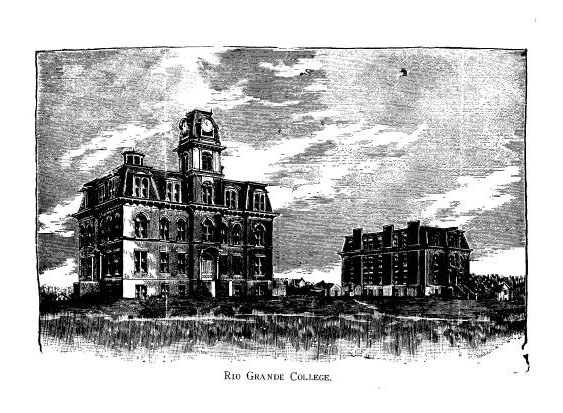Ohio History Journal
164 Ohio Arch. and His. Society Publications. [VOL. 3
RIO GRANDE COLLEGE-REV. J. M. DAVIS,
PRESIDENT.
When asked but a few hours ago to take part in the exercises
of this forenoon, I gladly consented; for, in my opinion, no inter-
est that has been developed in Gallia county in the first century
of its settlement is more worthy of being brought to remem-
brance and notice than its educational interests, and my connec-
tion for a number of years with Rio Grande college enables me
to set forth briefly its history and present condition. Other
gentlemen, who have given much time and research to the task,
have given an account of the public and other schools of this
city and of the county in general. I will confine my remarks to
the institution just named.
Shortly after the war of 1812, Nehemiah Atwood, a native
of Shenandoah county, Virginia, a man who had done honorable
service as an officer in the American army, settled in this county.
In 1819 he was married to Permelia Ridgeway, daughter of David
Ridgeway, who had come to Gallia county from South Carolina
in 1803. Mr. Atwood and his wife settled upon a farm near
where the present village of Rio Grande stands, and the remain-
der of their long and active lives was spent in the same neighbor-
hood. Without children, with good health, industry, economy,
and more than ordinary business qualifications, they accumulated
in about thirty years an estate of one hundred thousand dollars.
About 1850 a new personal force began to make itself felt
in the vicinity of their home, and we are called to notice a man
who afterward became one of the most useful and honored
citizens that this county has ever had. Rev. I. Z. Haning,
a native of Athens county, and a student of the Ohio University,
came as an evangelist into Huntington and Raccoon townships,
and under his divinely blessed labors a profound and extended
religious reformation took place, the good results of which are
yet visible in many forms.
Mr. and Mrs. Atwood listened to his teaching, were con-
verted to Christ, and from that day forth lived a new life. They
became studious and constant workers in their church and
